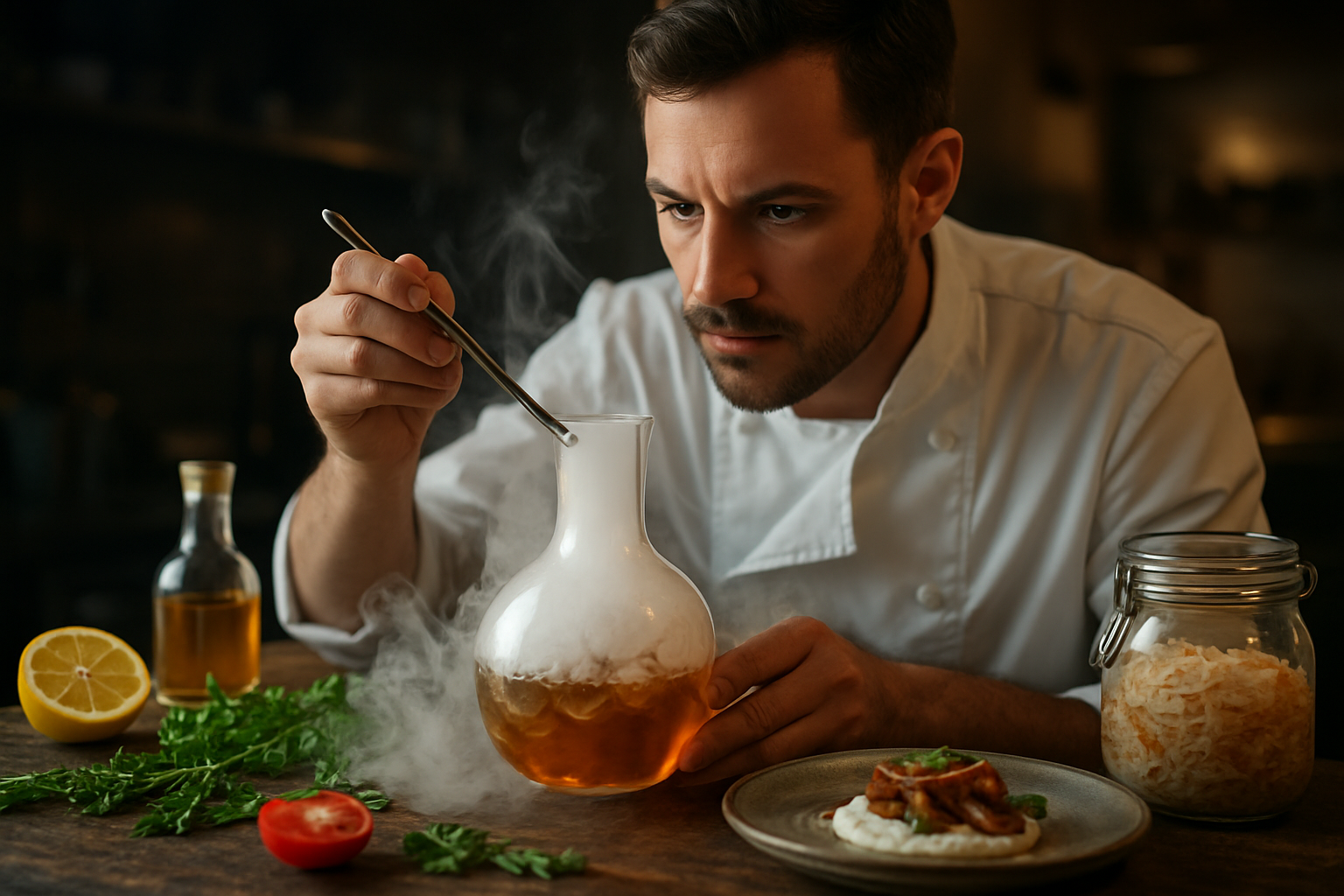Culinary Alchemy: Transforming Everyday Ingredients
Embark on a gastronomic adventure as we explore the art of culinary alchemy. Discover how ordinary ingredients can be transformed into extraordinary dishes through innovative techniques and creative pairings. From molecular gastronomy to ancient preservation methods, this journey will revolutionize your approach to cooking and elevate your culinary repertoire.

Smoke and Mirrors: The Art of Infusion
Infusion is a powerful tool in the culinary alchemist’s arsenal. This technique involves imparting flavors from one ingredient into another, often resulting in surprising and delightful combinations. Cold smoking, for instance, can infuse delicate ingredients like cheese, butter, or even ice cream with woody, smoky notes without altering their texture. Another method gaining popularity is hay smoking, where ingredients are gently cooked over smoldering hay, imparting a unique herbaceous flavor. Liquid infusions, such as oil or alcohol-based extractions, allow for the creation of complex flavor profiles in a single ingredient. Imagine a gin infused with butterfly pea flower that changes color when mixed with tonic, or a chili oil that carries the essence of roasted garlic and herbs.
Molecular Mixology: Cocktails Reimagined
The principles of culinary alchemy extend beyond the kitchen and into the world of mixology. Molecular mixology applies scientific techniques to create cocktails that challenge traditional notions of what a drink can be. Spherification, a process that encapsulates liquids in a thin gel membrane, allows mixologists to create caviar-like pearls of flavored liquids that burst in the mouth. Foams and airs, made by combining liquids with stabilizers and aerating them, add new dimensions to cocktails, both in terms of texture and presentation. Even the ice used in drinks can be transformed through techniques like clarification or infusion, turning a simple cube into a flavor-packed component of the cocktail experience.
Fermentation: Ancient Alchemy for Modern Palates
While fermentation is an age-old preservation technique, modern culinary alchemists are pushing its boundaries to create innovative flavors and textures. Beyond traditional products like cheese, wine, and yogurt, chefs are experimenting with fermented fruits, vegetables, and even meats to develop complex umami flavors and probiotic-rich foods. Koji, a Japanese fermentation culture, is being used to transform grains and legumes into savory, meat-like products. Lacto-fermentation of fruits and vegetables not only preserves them but also creates tangy, effervescent flavors that can elevate any dish. Even coffee is getting the fermentation treatment, with anaerobic fermentation processes creating unique flavor profiles in specialty beans.
Texture Alchemy: Playing with Perception
Texture plays a crucial role in our perception of food, and culinary alchemists are masters at manipulating it. Techniques like spherification, gelification, and emulsification allow chefs to transform liquids into solids, create gel-like textures, or blend immiscible ingredients. For example, olive oil can be transformed into powders that melt on the tongue, or fruits can be turned into caviar-like spheres that pop in the mouth. Freeze-drying is another technique that dramatically alters texture, creating crispy, airy versions of ingredients that retain their intense flavors. These textural transformations not only add interest to dishes but also challenge diners’ expectations and perceptions of familiar ingredients.
Useful Tips & Facts
• Agar, a seaweed-derived gelling agent, can be used to create heat-resistant gels for innovative desserts.
• Liquid nitrogen, at -196°C, can instantly freeze ingredients, creating unique textures and presentations.
• Transglutaminase, also known as “meat glue,” can bind proteins together, allowing for creative meat and seafood preparations.
• Edible flowers not only add visual appeal but can also impart unique flavors to dishes and drinks.
• Sous vide cooking allows for precise temperature control, perfect for culinary alchemy experiments.
Conclusion
Culinary alchemy is more than just a set of techniques; it’s a mindset that encourages chefs and home cooks alike to question traditional methods and explore new possibilities. By understanding the scientific principles behind these transformations, we can push the boundaries of what’s possible in the kitchen. As we continue to experiment and innovate, the line between science and cooking blurs, creating a new frontier of gastronomic experiences. Embrace your inner alchemist and start transforming your culinary creations today.





